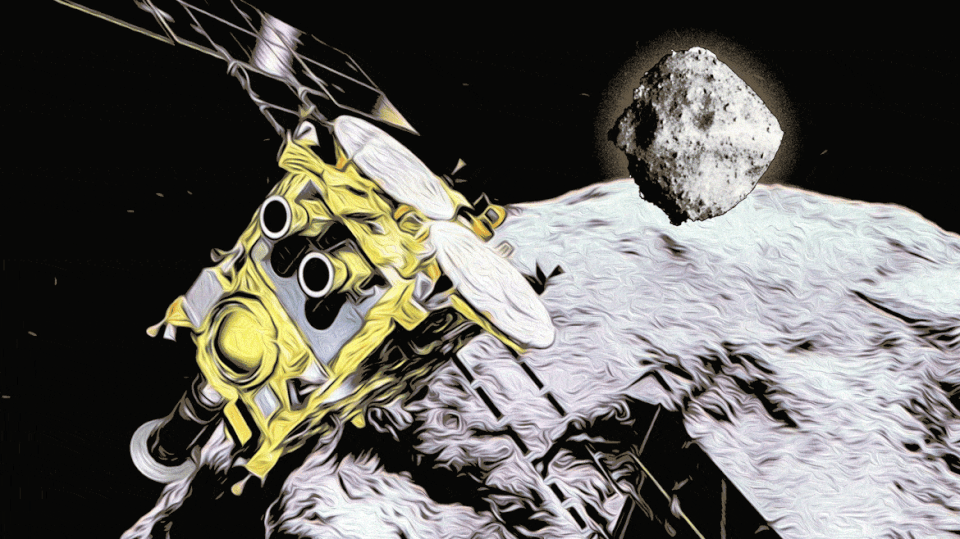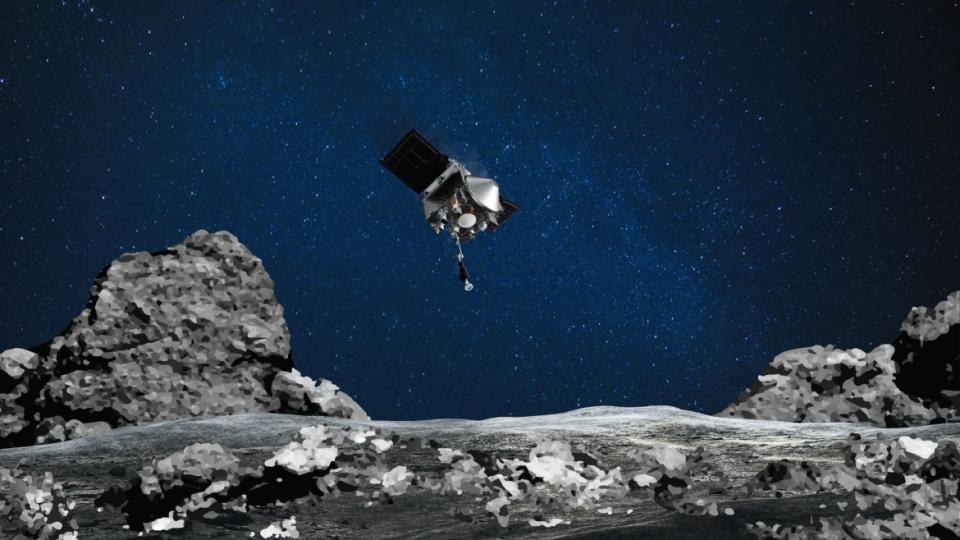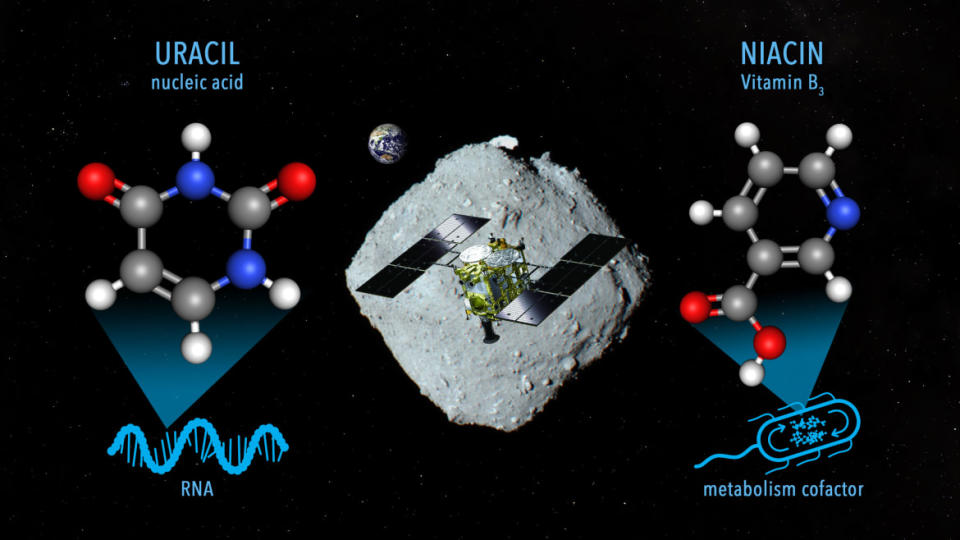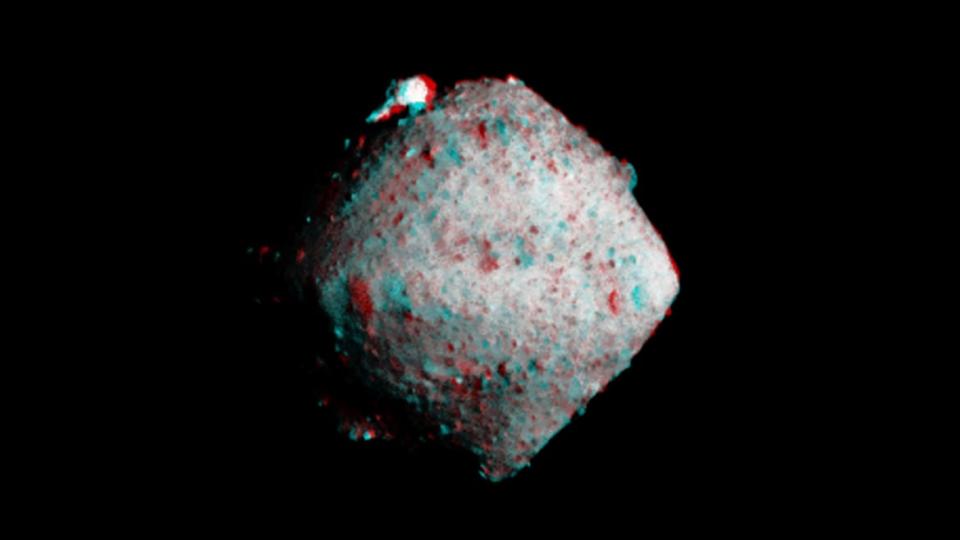We Found the Building Blocks of Life Hiding in Asteroid Dust

Back in 2010, Japan’s space agency JAXA completed one of the biggest milestones in the history of space exploration: It collected samples from an asteroid and brought them back to Earth. A decade later, the agency’s Hayabusa2 mission did the same thing with another asteroid called Ryugu—with a vastly more ambitious goal of bringing back an even bigger cache of extraterrestrial rock samples. For the past few years, scientists on Earth have been uncovering the chemical secrets embedded within these samples and whether there’s anything we can glean about the origins of the solar system and its planets. As it turns out, we’ve learned that Ryugu is home to a very special compound that’s a building block of genetic information itself.
On Tuesday, Japanese scientists revealed they discovered within the Ryugu samples the presence of uracil, a component that’s critical to the makeup of RNA. They also discovered nicotinic acid, better known as Vitamin B3 or niacin, which is important for allowing organisms to run metabolic functions.

An artist’s rendering of Hayabusa2 attempting a sample collection on the surface of Ryugu.
Both materials have been previously discovered in carbon-rich meteorites that have impacted Earth. But, “this is the first time they have been detected in any returned samples from space,” Yasuhiro Oba from Hokkaido University, who led the new study, told The Daily Beast in an email. “Based on this finding, we can say uracil is indeed present in space.” The findings were reported in Nature Communications.
The new discovery arrives at a time when scientists are trying to piece together a better understanding of how the building blocks to life first originated on Earth. One of the most popular theories among researchers these days is that during the formation of Earth, asteroids were responsible for bringing in water, organic molecules, nucleic acids, and other compounds that form the constituents of proteins and genes and cells.
Carbon-rich asteroids “have been considered as a source of organic molecules, in particular on the early Earth, as hypothesized by the late Carl Sagan in the early 90’s,” said Oba. “I expect such extraterrestrial materials could have a contribution to prebiotic chemistry and the origin of life on the Earth.”

The problem? These theories have been based on the study of meteorite samples already on Earth. There’s always been a chance that they’ve been contaminated by terrestrial factors.
But missions like Hayabusa2 enable us to study pristine samples, delivered to us in sealed capsules, that haven’t been messed up by earthly treasures.
Tanja Bosak, a geologist at MIT who was not involved with the study, told The Daily Beast that the new findings are “not so shocking” given previous research. But, she said, “it’s a really nice confirmation of these materials and these compounds being widespread.” It adds fuel to the notion that carbon-rich asteroids are likely a major mechanism for delivering pre-biological chemical compounds to other worlds, as probably was the case for Earth.
“It’s really encouraging that these compounds are so present in space,” she said.

An image of Ryugu taken by Hayabusa2 during its arrival.
Oba acknowledged that he and his colleagues still cannot conclude how the uracil and niacin were formed and found their way onto Ryugu. But they think a possible formation mechanism has to do with photochemical reactions of interstellar ices that contain simple compounds like water, methanol, and ammonia. These reactions would have taken place long before the solar system first came together.
Ultimately, the study further validates the importance of running more sample return missions in the coming years. People are waiting intensely for NASA’s OSIRIS-REx mission to returnbsamples of asteroid Bennu back to Earth later this year. And the Perseverance rover is quickly collecting samples of Martian rock on the red planet for scientists to study next decade—which could finally reveal to us whether alien life once existed on Mars, or perhaps still does.
Get the Daily Beast's biggest scoops and scandals delivered right to your inbox. Sign up now.
Stay informed and gain unlimited access to the Daily Beast's unmatched reporting. Subscribe now.

